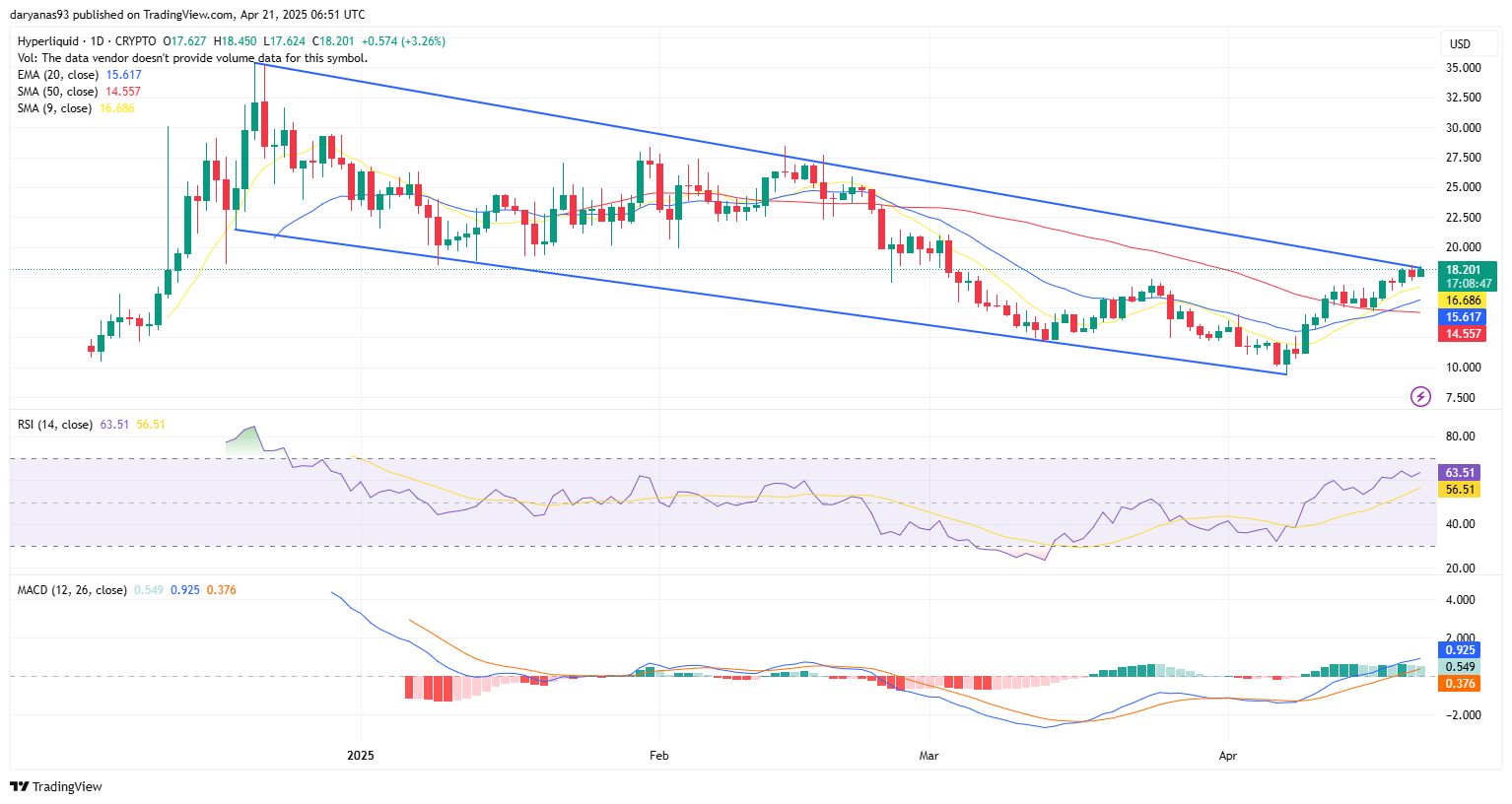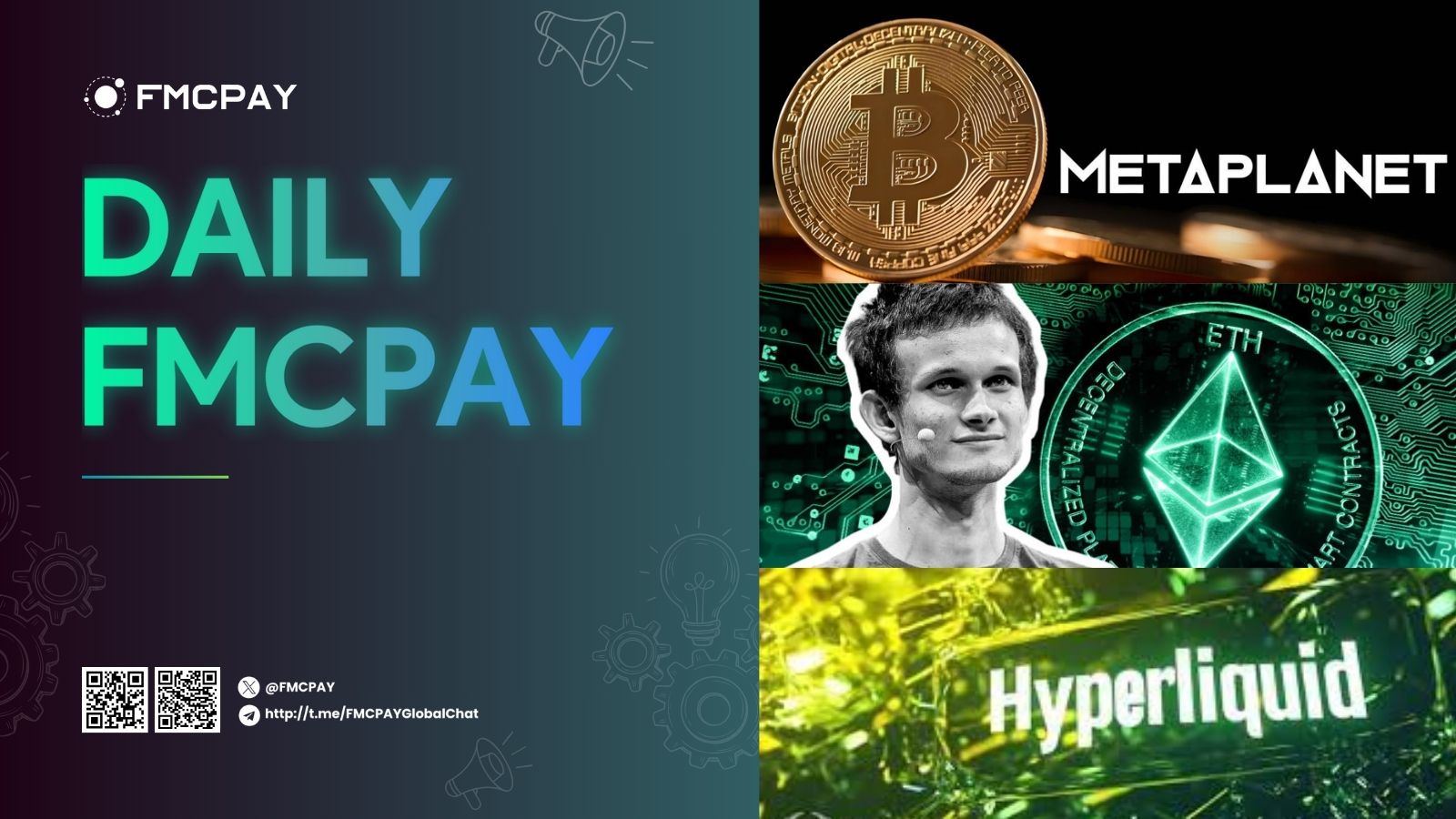With 330 BTC in its most recent harvest, Japan’s Metaplanet is shown no signs of slowing down its Bitcoin acquisition binge.
Through a $28.2 million bulk buy, Metaplanet has expanded the size of its Bitcoin (BTC) holdings by 330. Amid strong year-to-date returns, the most recent buy takes the Japanese company’s assets closer to the 5,000 BTC threshold.
Metaplanet buys 330 BTC for nearby $30 million
Tokyo-based Metaplanet has revealed that it has increased its Bitcoin holdings by 330 BTC. Simon Gerovich, the CEO of Metaplanet, wrote on X that the Japanese business spent $28.2 million on the acquisition.
Metaplanet has acquired 330 BTC for ~$28.2 million at ~$85,605 per bitcoin and has achieved BTC Yield of 119.3% YTD 2025. As of 4/21/2025, we hold 4855 $BTC acquired for ~$414.5 million at ~$85,386 per bitcoin. pic.twitter.com/EUFSbUCOPW
— Simon Gerovich (@gerovich) April 21, 2025
According to Gerovich’s statement, Metaplanet’s most recent acquisition cost an average of $85,605 per Bitcoin. As of right now, Metaplanet has an astounding 4,855 BTC holdings, which is worth close to $500 million.
According to Metaplanet, their purchase binge has resulted in a Bitcoin yield of 119.3% so far this year.
After a fantastic Q1 performance, the most recent buy comes after the purchase of 696 BTC at the beginning of April.
A year ago, Metaplanet started accumulating Bitcoin and changed its business model to a “Bitcoin First” approach. Since then, the business has focused on Bitcoin and has used a mix of bond issuances and stock offers to finance its acquisitions.
Matching the pace of other BTC-focused companies
Due to its consistent BTC purchases, Metaplanet is able to stay up with a number of businesses that are focused on Bitcoin. By using a dollar-cost averaging (DCA) approach, the business is taking a cue from MicroStrategy.
Both companies qualify for Bitwise OWNB, a fund tracking company with at least 1,000 BTC on its balance sheet, even if Metaplanet’s Bitcoin holdings are small compared to MicroStrategy’s. Setting the standard for the rest of the business, MicroStrategy spent $285 million to acquire 3,459 BTC in its most recent acquisition.
The Tokyo-based company has added Eric Trump to its Strategic Board of Advisors in a heroic effort to stay ahead of Microstrategy. According to a rumor, Metaplanet is constructing a bullish Bitcoin catalyst in the upcoming weeks after organizing a $10 million acquisition.
The acquisition of Bitcoin by Metaplanet comes after a stunning price surge that saw prices reach $87.3K in the face of macroeconomic uncertainty. After gold posted a new all-time high, the leading cryptocurrency seems to have separated from equities and surged.
Vitalik Buterin proposes RISC-V upgrade to boost Ethereum’s execution speed
Buterin listed the primary obstacles that Ethereum has to overcome in order to continue being competitive and scalable.
By suggesting a move from the Ethereum Virtual Machine (EVM) contract language to the RISC-V instruction set architecture, Ethereum co-founder Vitalik Buterin has proposed a daring modification to the network’s execution layer.
Buterin listed the primary obstacles that Ethereum has to overcome in order to be competitive and scalable in a proposal that was made public on April 20.
These include streamlining zero-knowledge proof creation, guaranteeing healthy competition in block manufacturing, and enhancing data availability sampling.
Buterin sees RISC-V as key to advancing Ethereum’s zero-knowledge capabilities
According to Buterin, RISC-V integration might lead to significant advancements in these fields, especially in zero-knowledge functions, which are becoming more and more important to Ethereum’s future.
“The beam chain effort holds great promise for simplifying Ethereum’s consensus layer,” Buterin wrote.
“But for the execution layer to achieve similar benefits, a radical shift like this may be the only viable path.”
The recommendation is made at a time when Ethereum is facing increasing pressure to catch up with high-throughput, more recent blockchains like Sui and Solana.
These networks are becoming more and more appealing to developers and consumers because they provide quicker and less expensive transactions.
In the meantime, Ethereum’s earnings from “blob fees,” a type of transaction charge derived from layer-2 networks, have drastically decreased.
According to Etherscan data, average network costs in April 2025 fell to a five-year low of $0.16 per transaction, while blob fees decreased to just 3.18 ETH (about $5,000) during the week of March 30.
Brian Quinlivan, marketing director at Santiment, explains the cost decrease by pointing to a decrease in Ethereum base layer activity as consumers switch to layer-2 solutions.
These networks have contributed to lower transaction costs, but they have also taken a sizable portion of Ethereum’s fee income away from the platform’s essential functions.
🚨💸 BREAKING: Ethereum fees are at a 5-year low, with transactions currently costing just $0.168. This is the cheapest daily cost of making $ETH transfers since May 2, 2020. We briefly break this down in our latest insight. 👇https://t.co/fg5CfRgsHn pic.twitter.com/QlLwyzdm1F
— Santiment (@santimentfeed) April 16, 2025
Concerns over the basal layer’s long-term viability have been raised by this change.
Given the current pressure on ETH prices, analysts caution that if investor confidence doesn’t improve, additional declines in base-layer activity could push ETH down to values as low as $1,100.
VC blames layer-2s for Ether’s waning investment appeal
Nic Carter, a crypto venture investor with Castle Island Ventures, identified two major problems that are eroding Ether’s value last month: the growth of layer-2 (L2) scaling networks and unrestricted token issuance.
“Greedy Eth L2s,” he claimed, are stealing value from Ethereum’s foundation layer and returning very little.
“ETH was buried in an avalanche of its own tokens,” he said, criticizing the Ethereum community’s embrace of excessive token production. died on its own initiative.
Carter’s remarks came after Lekker Capital founder Quinn Thompson made a similarly bleak assessment, stating that Ethereum is “completely dead” as an investment.
Despite its usefulness as a blockchain platform, Thompson pointed to dwindling transaction volume, slower user growth, and decreased network income as indicators that ETH no longer presents a compelling investment case.
Make no mistake, $ETH as an investment is completely dead. A $225 billion market cap network that is seeing declines in transaction activity, user growth and fees/revenues. There is no investment case here. As a network with utility? Yes. As an investment? Absolutely not. pic.twitter.com/XjZNjPjy2s
— Quinn Thompson (@qthomp) March 28, 2025
Carter issued a warning back in September 2024, stating that L2s were capturing user activity and income without adding to Ethereum’s foundation layer, causing Ethereum’s fee revenue to drop by 99% in just six months.
HYPE price tracks toward $20 as bullish pattern signals major comeback
As it approaches a breakthrough from a falling wedge formation, HYPE is displaying strong bullish indications.
As it is about to break out of the falling wedge formation and trade above the important moving averages, such as the 20-day Exponential Moving Average, the 9-day Simple Moving Average, and the 50-day Simple Moving Average, hyperliquid is displaying significant bullish momentum.
Following its peak of $35.02 on December 21, the price of HYPE went into a downward trend, forming a falling wedge. On April 7, the price fell to around $9, touched the lower trendline of the wedge, then rose to challenge the prior resistance at about $17.30. It has since surpassed all of the main moving averages, such as SMA 9, EMA 20, and SMA 50. A recent bullish cross between the 20 EMA and 50 SMA indicates a trend reversal.
At 63.51 right now, the RSI shows that bullish momentum is increasing. With both lines above zero, the MACD likewise displays a bullish crossing.
Read more: COMPLETE GUIDE TO HYPERLIQUID DEX

The psychological $20 level, which also happens to be the area where the price was supported several times in January and February before breaking down in early March, is the next significant resistance level if HYPE stays above $18.
The next important obstacle to keep an eye on once $20 is cleared is around about $26, where the higher trendline and the lower high that established in mid-February converge.
A longer-term objective of $35, which corresponds to the upper trendline of the falling wedge, is feasible if the wedge breakout is verified and the price stays above $18 with rising volume.
If HYPE is unable to stay above the $18 support zone, particularly while sell volume is rising, the bullish thesis would be disproved. A retest of the $17.30 level or possibly a return to the wedge’s lower trendline, which is located between $12 and $13, might be possible if the market breaks back below the 50-day SMA and 20-day EMA, which would indicate a lack of momentum.


